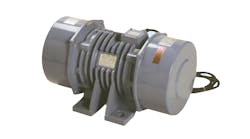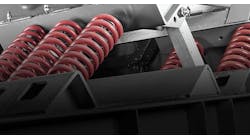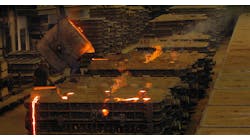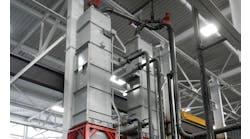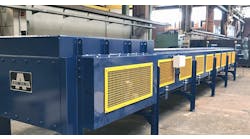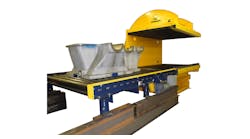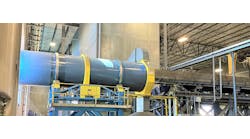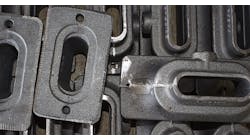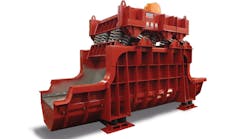Any metalcasting operation will have dozens of strategies and objectives, but all of them have one principle that never changes: produce the highest volume of saleable products at the lowest possible cost. They rely on operators’ skills and system performance to contain cost over-runs — but even highly skilled operators may rely too much on instinct, and less on incremental design improvements, to gain all the benefits they might even from the most basic equipment.
For example, vibratory shakeout machines are standard equipment for sand-casting foundries. These machines receive solidified castings fresh from the molds, and through the vibratory process separate the castings from the molding sand. It’s been this way for decades.
Keeping the machine operating with efficiency, with high throughput, and without damaging the hot castings seems to be obvious performance standards. Does it take a skilled operator to get the most of a shakeout machine? You’d be surprised at what you may not know.
Consider these design factors from the current generation of vibratory shakeout machinery. The best new systems feature a dynamically balanced and isolated design that eliminates the vibration transmission to the foundation. Conveyor Dynamics Corp. uses this balanced Two-Mass design for vibration isolation, lower horsepower requirements, and easy installation. A dynamically balanced and isolated design requires no special foundation or pit from which to operate, and furthermore these factors will reduce maintenance requirements for the foundry.
They also are simple to operate: there are no crank arms, bearings, or rubber compression drives to confound the work crew. It also prolongs performance life for the vibratory machinery, compared to more standard (“brute force”) designs that lead to machine fatigue and cracked or broken components, as “brute force” is just as it implies that the machine is built to operate in a way that doesn’t promote longevity of the components and main structure.
Another important point to understand about the latest vibratory shakeout designs is that they include the ability for variable amplitude. For example, Conveyor Dynamics offers systems to operate up to 1,200 RPM, which allows the operator to control the vibratory action with ease and precision, to control retention time and (critically) prevent damage to hot castings.
The latest Conveyor Dynamics Corp. Shakeout/Sand Reclaimer combines shakeout and sand reclamation in one machine to occupy less floor space than separate shakeout and sand reclamation machines. The low-profile, open deck design makes it easy load molds for shakeout and casting removal, and the sand reclamation function delivers sand in good quality condition back to original grain size, with low LOI and no change in acid demand for the foundry. It also removes tramp metal and debris from the unmolded sand.
Through continuous innovation even the most basic foundry process can be improved upon for multiple benefits. Shakeout is a necessary function with new developments and benefits available for optimal performance, low maintenance, and better efficiencies. The process technology may not seem to change for metalcasters, but the ones that reconsider the factors contributing to better performance will be rewarded for their effort.

